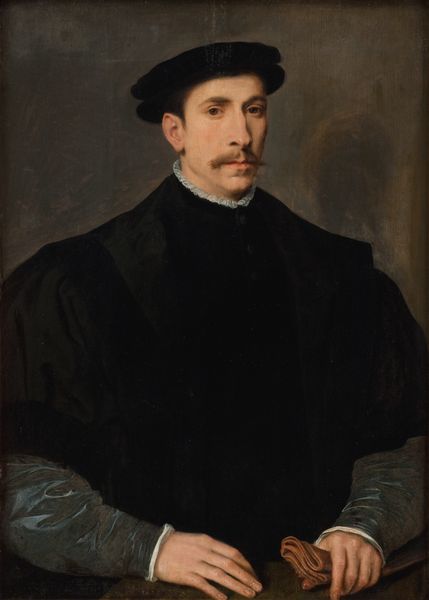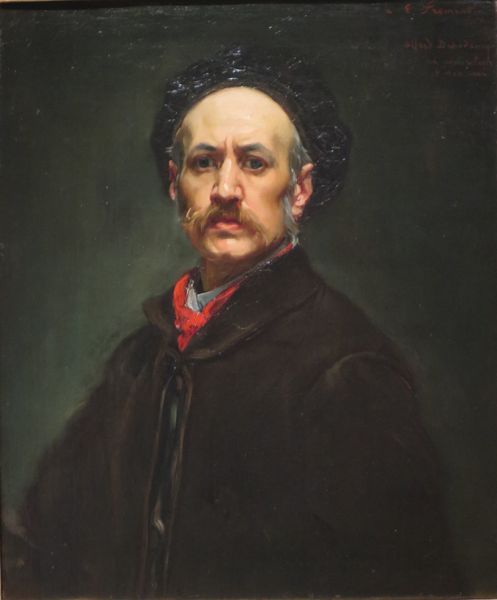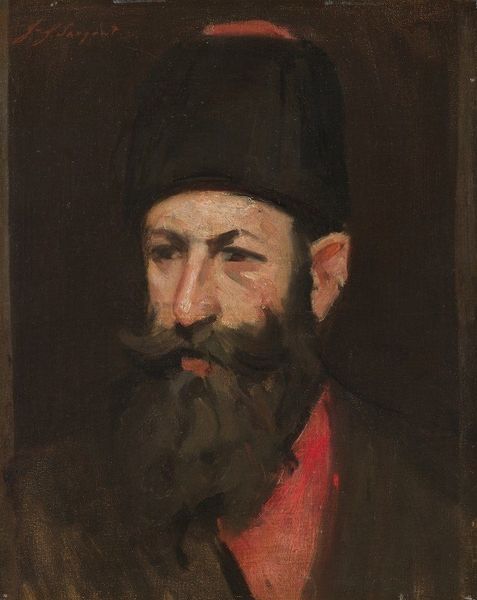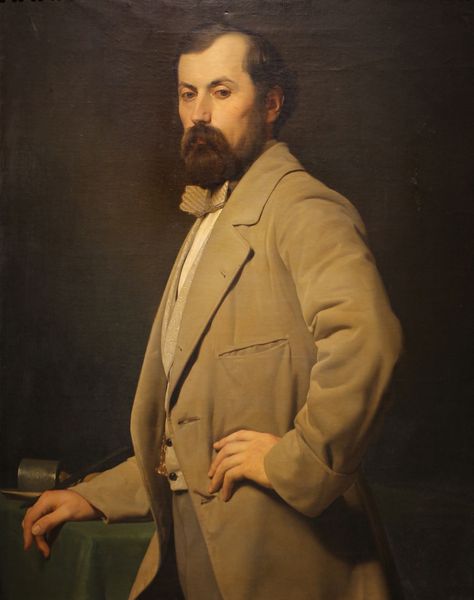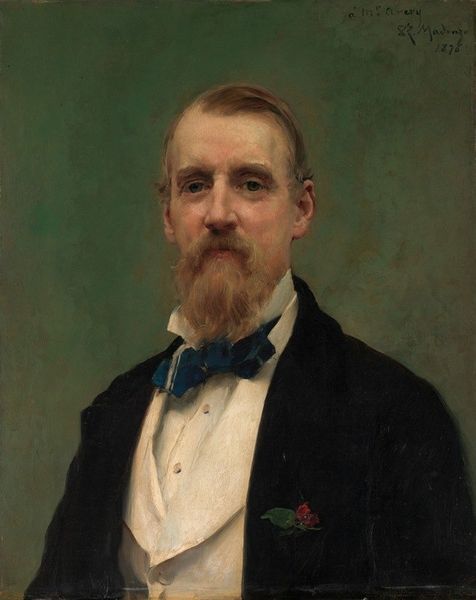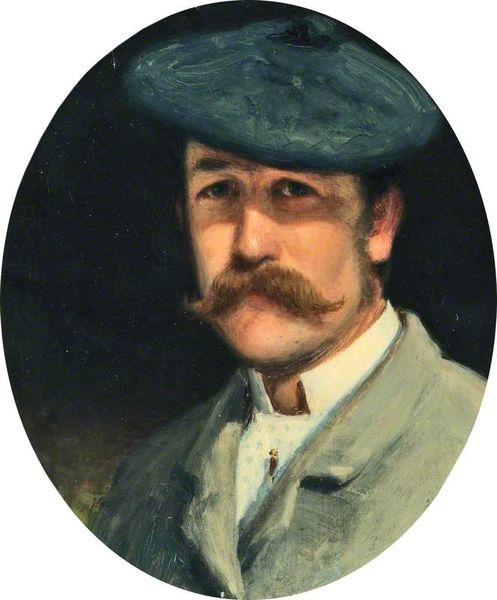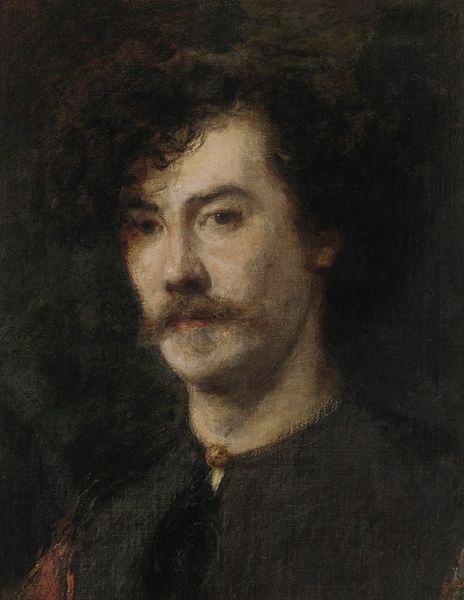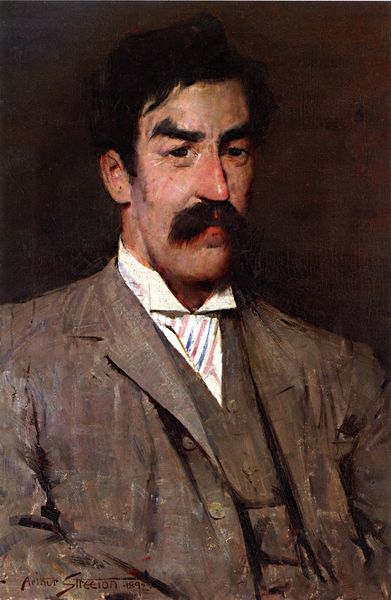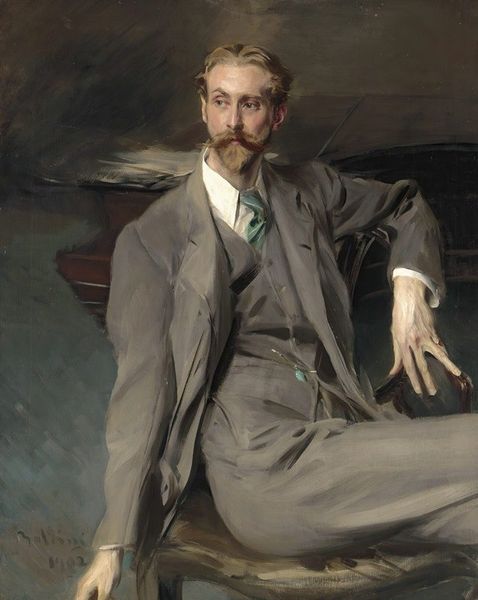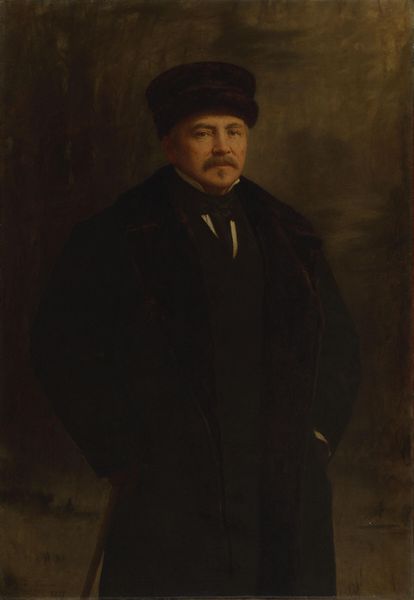
Copyright: Public Domain: Artvee
Curator: Look at this striking self-portrait. Raimundo de Madrazo painted "Eduardo De Zamacois" in 1864. The medium is oil on canvas. It's really captivating. What catches your eye first? Editor: The confident gaze and the red beret really pop out at me. It’s a very deliberate image. I feel like he is trying to project an air of self-assuredness and artistic flair. Curator: Exactly! The red beret is absolutely a conscious choice, a visual symbol. The colour itself is evocative, linked to passion and creativity, and, traditionally, academic or professional status. Think of how often artists have portrayed themselves wearing them across cultures. Editor: Yes, the colour symbolism of red is fascinating here, drawing in the viewer’s attention. It also tells us how artists, especially during Romanticism, want to project themselves to society: in this case, as rebellious, passionate geniuses. How does the style reinforce or subvert this projected persona? Curator: It is interesting. There’s a push and pull between the Romantic era’s embrace of individualism and the almost bourgeois attire. The impasto brushwork, though, feels quite deliberate in highlighting his face and beard – it lends texture and depth, making him appear vital and immediate. This could represent the artist’s soul revealed to the public. Editor: The composition, with its oval frame, feels almost like a cameo – but enlarged, brought to life, made flesh by the painter’s impasto technique. But how does this intimate depiction of the artist correspond to the wider politics of artistic production and recognition in that historical context? Curator: Good question. Think of the art world developing. The growth of galleries and public art exhibitions—and here, Madrazo subtly positions himself within it, proclaiming his talent to potential patrons and peers, marking his place in the developing cultural landscape. Editor: Indeed. In many ways this portrait can be read as the artist announcing and cementing his public role and artistic status in 1864. The gaze forward implicates the viewer in that same mission, even today. Curator: Yes. Through visual cues, he actively molds the viewers’ perceptions. What’s amazing is how these echoes still resound, affecting our perceptions today. Editor: Definitely. Understanding these details reveals the layered significance that spans not just art history, but also visual communication. Curator: So well said. It is a constant reminder of art’s role in perpetuating symbols.
Comments
No comments
Be the first to comment and join the conversation on the ultimate creative platform.

